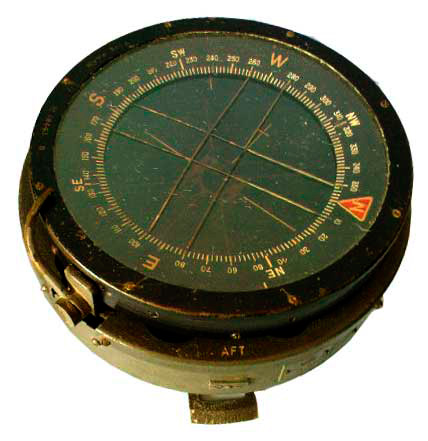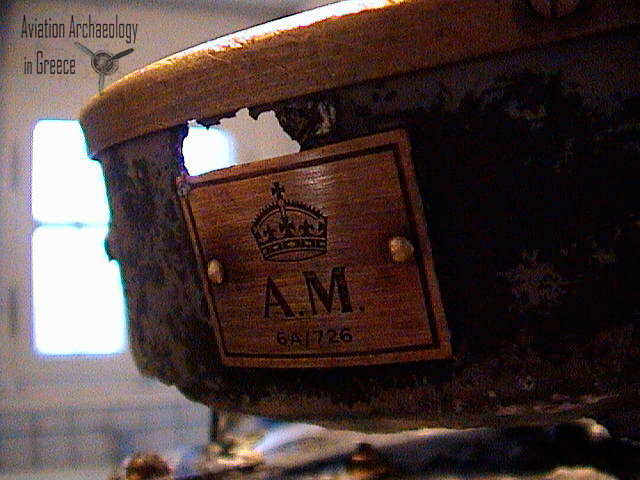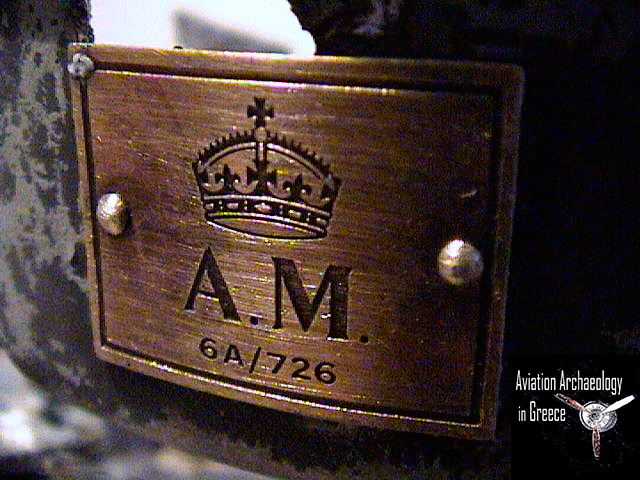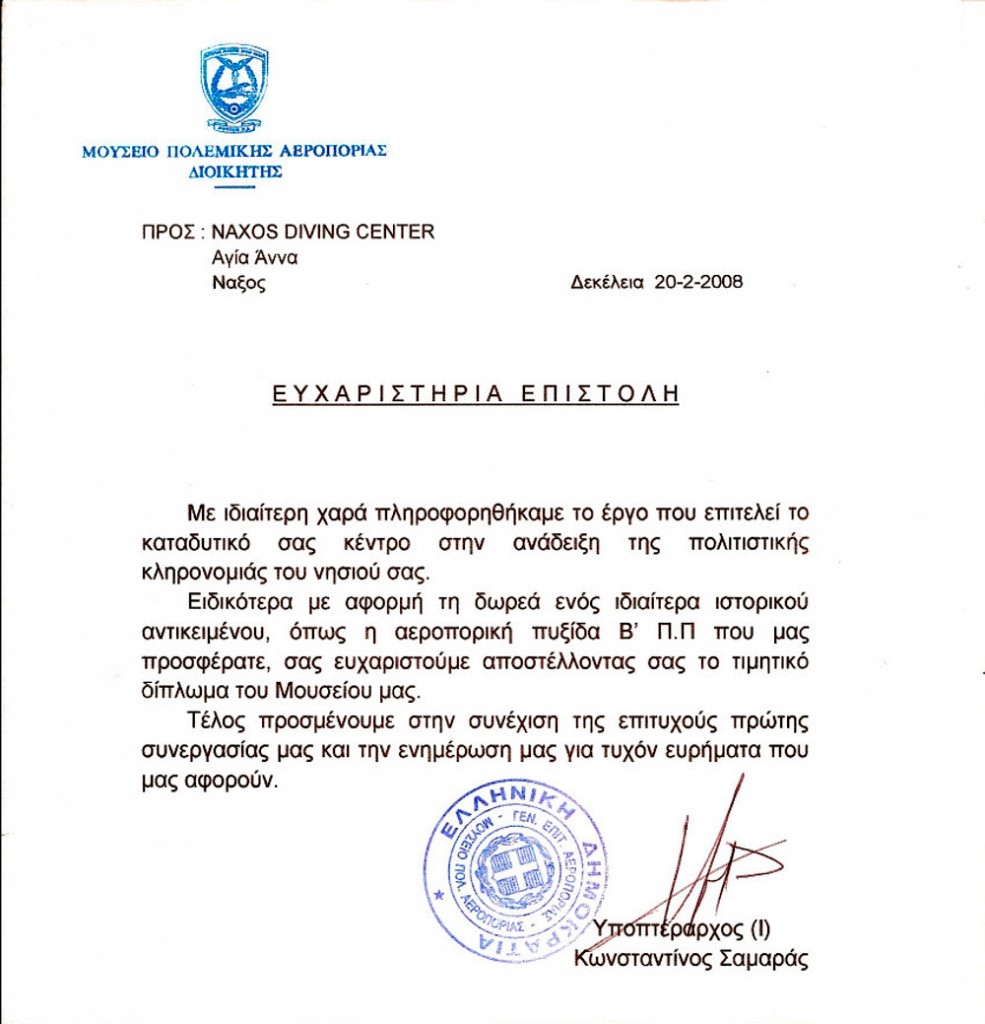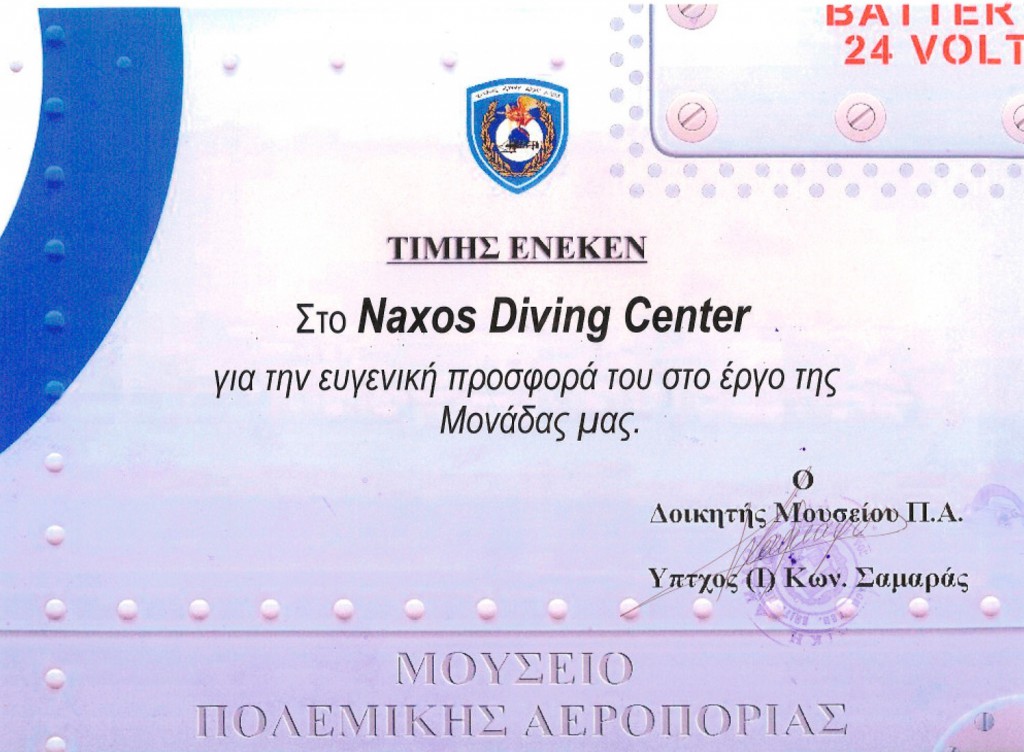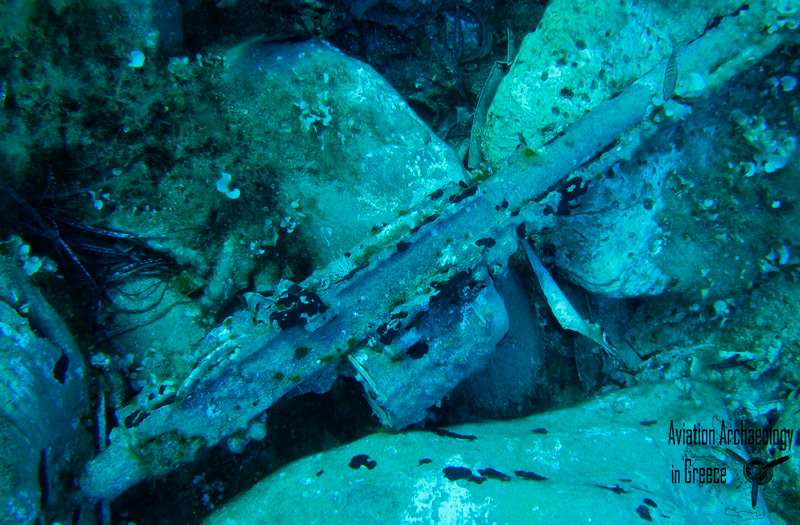
![]() Το αεροσκάφος τύπου Bristol Type 156 Beaufighter Mk.X με σειριακό αριθμό JM317/S συνετρίβη στις 30 Οκτωβρίου 1943 σε θαλάσσια περιοχή του βορειοδυτικού όρμου Αμπράμ της Νάξου. Το αεροσκάφος εντοπίστηκε και λεηλατήθηκε μετά τον πόλεμο και σήμερα έχουν απομείνει στο βυθό σκορπισμένα συντρίμμια σε σχετικά ρηχό βάθος 12 έως 16 μέτρων. Σε έρευνα πεδίου που πραγματοποιήθηκε από τον ιδιοκτήτη του Naxos Diving Center εκπαιδευτή Κο Μανώλη Μπαρδάνη το 2007 εντοπίστηκε η πυξίδα του πιλότου. Πρόκειται για πυξίδα Air Ministry Ref No 6A/726 τύπου P8.
Το αεροσκάφος τύπου Bristol Type 156 Beaufighter Mk.X με σειριακό αριθμό JM317/S συνετρίβη στις 30 Οκτωβρίου 1943 σε θαλάσσια περιοχή του βορειοδυτικού όρμου Αμπράμ της Νάξου. Το αεροσκάφος εντοπίστηκε και λεηλατήθηκε μετά τον πόλεμο και σήμερα έχουν απομείνει στο βυθό σκορπισμένα συντρίμμια σε σχετικά ρηχό βάθος 12 έως 16 μέτρων. Σε έρευνα πεδίου που πραγματοποιήθηκε από τον ιδιοκτήτη του Naxos Diving Center εκπαιδευτή Κο Μανώλη Μπαρδάνη το 2007 εντοπίστηκε η πυξίδα του πιλότου. Πρόκειται για πυξίδα Air Ministry Ref No 6A/726 τύπου P8.
![]() On 30 October 1943 a RAF Bristol Type 156 Beaufighter Mk.X with s/n JM317/S crashed into the sea in Abram Bay, on the Cycladic island of Naxos.
On 30 October 1943 a RAF Bristol Type 156 Beaufighter Mk.X with s/n JM317/S crashed into the sea in Abram Bay, on the Cycladic island of Naxos.
The wreck was discovered and looted during the post war years and the remaining parts rest today scattered on the seabed at a shallow depth of 12-16 meters.
During a field survey conducted by Naxos Diving Center Owner and Dive Instructor Mr Manolis Bardanis in 2007 the Pilot’s Compass Air Ministry Type P8 with ref. No 6a/726 of diameter 13.6 cm, width 7.7 cm and weight 821 gr, in service and commonly used since 1937 and throughout the WWII onboard RAF and RAAF Spitfires, Hurricanes, Tiger Moths and Beaufighters, was recovered, restored and handed over to the Hellenic Air Force Museum in Dekelia-Tatoi, Greece, in February 2008, where it is continuously exhibited since.
![]() Am 30. Oktober 1943 ist der RAF Bristol Typ 156 Beaufighter Mk.X mit S/N JM317/S ins Meer in der Bucht von Abram, einem nordwestlichen Strand zwischen Apollonas und Eggares Dörfer, auf der Zykladischen Insel Naxos, abgestürzt.
Am 30. Oktober 1943 ist der RAF Bristol Typ 156 Beaufighter Mk.X mit S/N JM317/S ins Meer in der Bucht von Abram, einem nordwestlichen Strand zwischen Apollonas und Eggares Dörfer, auf der Zykladischen Insel Naxos, abgestürzt.
Das Wrack ist in den Nachkriegsjahren endeckt und geplündert worden und die Flugzeugrestteile befinden sich heute in einer flachen Tiefe zwichen 12 und 16 Meter auf dem Meeresboden verstreut .
Während einer Feldsforschung von Naxos Diving Center Inhaber und Tauchinstruktor Herrn Manolis Bardanis im Jahre 2007 der Flugzeugkompass Air Ministry Typ P8 Ref. Nr 6a/726 mit Durchmesser 13,6 cm, Breite 7,7 cm und Gewicht 821 gr, seit 1937 im Dienst und im Laufe des 2. WK an Bord der meisten RAF und RAAF Spitfires, Hurricanes, Tiger Moths und Beaufighters regelmäßig ausgeführt worden ist, wurde wiedergefunden, renoviert und im Februar 2008 dem Griechichen Luftwaffe Museum in Dekelia-Tatoi, Griechenland übergeben, wo es seitdem ständig ausgestellt wird.
Η πυξίδα τύπου P8 χρησιμοποιήθηκε από το 1937 σε αεροσκάφη τύπου Spitfire, Hurricane, Tiger moth, Beaufighter. H πυξίδα έχει Διάμετρο 13.6 cm, ύψος 7.7 cm, βάρος 821 gr.
Τhe Pilot's Compass Type P8 with ref. No 6a/726 of diameter 13.6 cm, width 7.7 cm and weight 821 gr, in service and commonly used
since 1937 and throughout the WWII onboard RAF and RAAF Spitfires, Hurricanes, Tiger Moths and Beaufighters.
Η πυξίδα όπως εντοπίστηκε στον βυθό.
Φωτογραφίες της πυξίδας μετά από τις διαδικασίες καθαρισμού.
Η πυξίδα παρεδόθη στο Μουσείο Πολεμικής Αεροπορίας στο Τατόι τον Φεβρουάριο του 2008.
Φωτογραφίες από συντρίμμια του αεροσκάφους.
